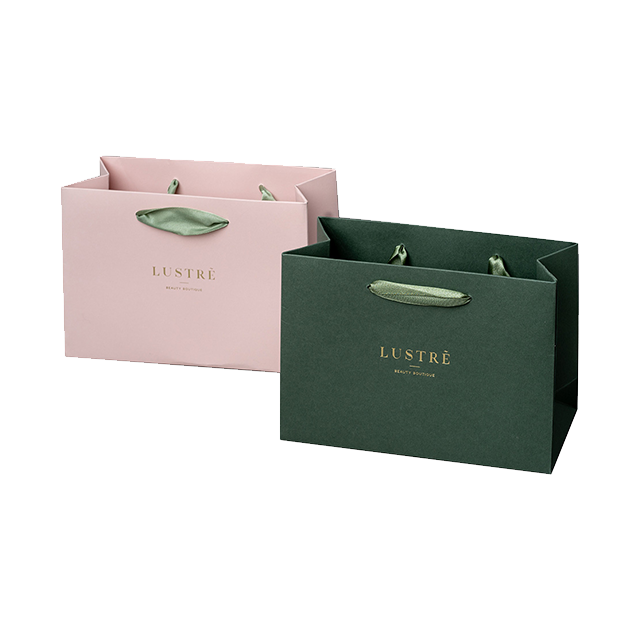








Have you ever wondered about the process that turns simple paper into the functional, eco-friendly bags we use every day? Paper bags are more than just an eco-friendly alternative; they are part of an innovative process that has evolved over centuries. In this article, we will explore the fascinating journey of how paper bags are made, from raw materials to the final product.
In this post, we will discuss the history of paper bags, the materials involved, and the step-by-step manufacturing process. You will also learn why paper bags are a sustainable choice for packaging solutions.
Let’s dive into the world of paper bag production and see what goes into making these everyday items.
The paper bag has a surprisingly rich history. Although the concept of a paper bag has existed for centuries, the invention of the modern paper bag machine came in the 19th century. The square-bottom paper bag, which is commonly used today, was invented by Luther Childs Crowell in the 1870s. His innovation revolutionized how we pack goods and is credited with laying the foundation for the commercial paper bag industry.
As environmental concerns grow, the paper bag manufacturing industry is constantly evolving to meet the demands for sustainability and innovation. Recent advancements have focused on improving the strength and durability of paper bags while using fewer resources. For instance, new technologies in paper processing allow for lighter-weight bags that are just as strong as their heavier counterparts. Additionally, the development of water-based adhesives and non-toxic inks ensures that the paper bags produced are even more eco-friendly and safer for the environment.
These innovations are a significant step forward in reducing the carbon footprint of paper bag production, ensuring that businesses can offer more sustainable options to their customers without compromising quality.
In recent years, paper bags have become more than just a packaging solution—they have become a part of branding strategies for retailers across the globe. Many companies are now using custom-designed paper bags as a marketing tool, showcasing their logo, brand colors, and messaging. This not only enhances brand visibility but also strengthens their commitment to sustainability, as customers increasingly demand eco-friendly products.
From luxury retail stores to small businesses, paper bags have become a symbol of responsible shopping, helping retailers connect with eco-conscious consumers. As the demand for sustainable packaging grows, paper bags will continue to be a key player in the packaging industry.

At the heart of every paper bag is paper pulp. This pulp is derived from wood fibers and sometimes recycled paper. The pulp is processed and pressed into large sheets or rolls, which are the foundation of the bags.
The quality and texture of the paper used in the production of paper bags can vary. Kraft paper, which is strong and durable, is commonly used for making paper bags. This type of paper has natural brown coloring, but bleached versions are also available for more aesthetic purposes.
Now, let’s walk through the stages involved in manufacturing a paper bag.
First, the paper pulp is mixed with water and other additives to form sheets or rolls of paper. The thickness of the paper is carefully controlled depending on the type of bag being produced.
Once the paper is prepared, it is cut into the desired size. Typically, the sheets are cut to twice the height of the final bag, allowing for folding. This ensures that the bag will have the necessary dimensions to accommodate products.
Next, the cut sheets are folded in half. The two open edges are then glued together, either by applying a liquid adhesive or using a heat press. This step creates the basic shape of the bag.
To give the paper bag a sturdy structure, a square or rectangular bottom is attached. This can be achieved by folding the bottom edges and gluing them or using a special machine that precisely folds and presses the edges.
If the paper bag requires handles, they are typically added at this stage. Handles are usually made from twisted paper or rope and are securely attached to the bag.
Finally, the bags go through a quality control process where they are checked for any defects. Once approved, the bags are packaged and ready for distribution.

Paper bags are versatile and come in various forms depending on their use. Some common types include:
● Grocery Bags: Typically square-bottomed and used for carrying heavy items.
● Gift Bags: Often decorated with handles and used for packaging gifts.
● E-commerce Mailing Bags: Used for shipping products and often come with a self-adhesive flap.
● Food Bags: Used in restaurants or for takeaway food, designed for durability and food safety.
One of the main reasons paper bags are popular is their environmental benefits. Unlike plastic bags, paper bags are biodegradable and recyclable. This makes them an excellent choice for businesses looking to reduce their environmental impact.
Paper bags are strong, durable, and able to carry a variety of products, from groceries to high-end retail items. Their ability to hold weight and their versatility make them a practical choice for many industries.
Paper bags can be easily customized with logos, colors, and designs, making them an ideal packaging solution for branding. Whether you are a retailer, a food business, or an online store, paper bags can be tailored to meet your needs.
When considering where to purchase high-quality paper bags, Colormix offers an outstanding range of options. Their commitment to sustainable practices, high-quality materials, and customization options ensures that your business can enjoy eco-friendly packaging solutions that align with your branding goals. Visit their website to explore their wide range of paper bags and find the perfect packaging for your business.
A: The time required to make a paper bag depends on the complexity of the design, but typically, it takes only a few minutes to produce a single bag once the materials are prepared.
A: Yes, paper bags are generally stronger than plastic bags, especially when made from high-quality Kraft paper. They are more durable and can carry heavier items without tearing.
A: Absolutely! Paper bags are 100% recyclable and biodegradable, making them a much more sustainable option compared to plastic bags.
A: Yes, paper bags are environmentally friendly because they are made from renewable resources, are biodegradable, and can be recycled.
A: Yes, paper bags can be easily customized with logos, designs, and various colors, making them an excellent choice for branding and packaging.

